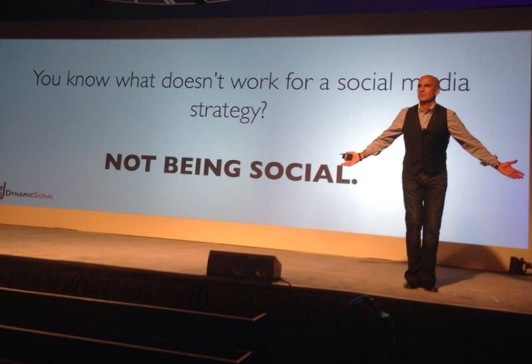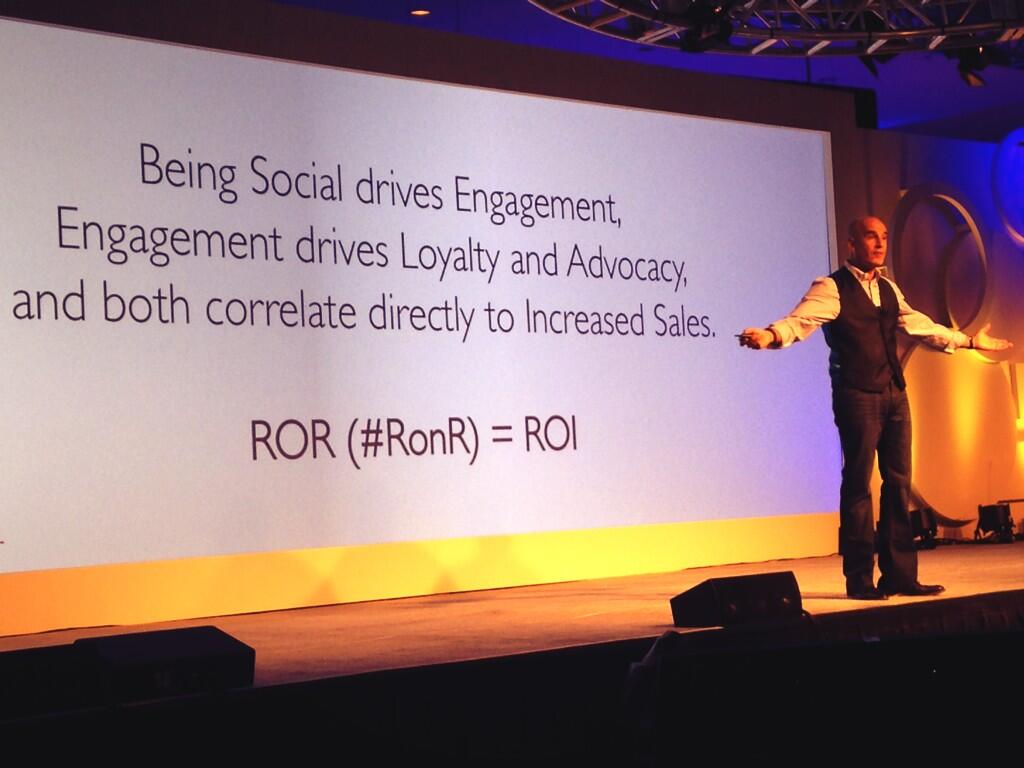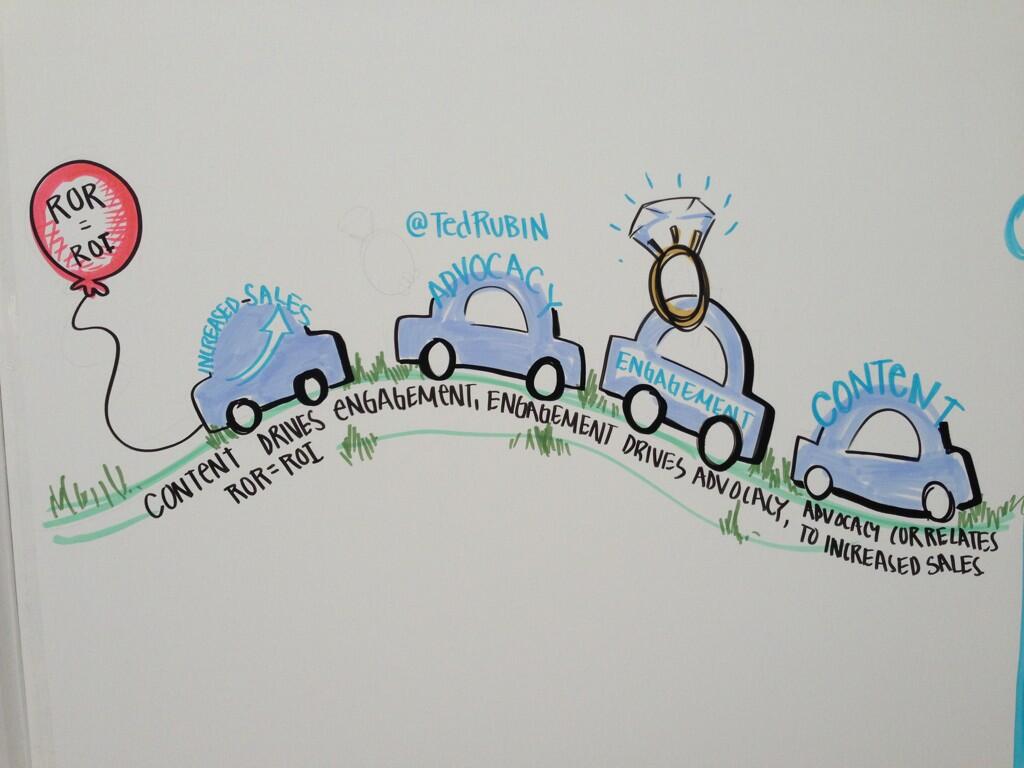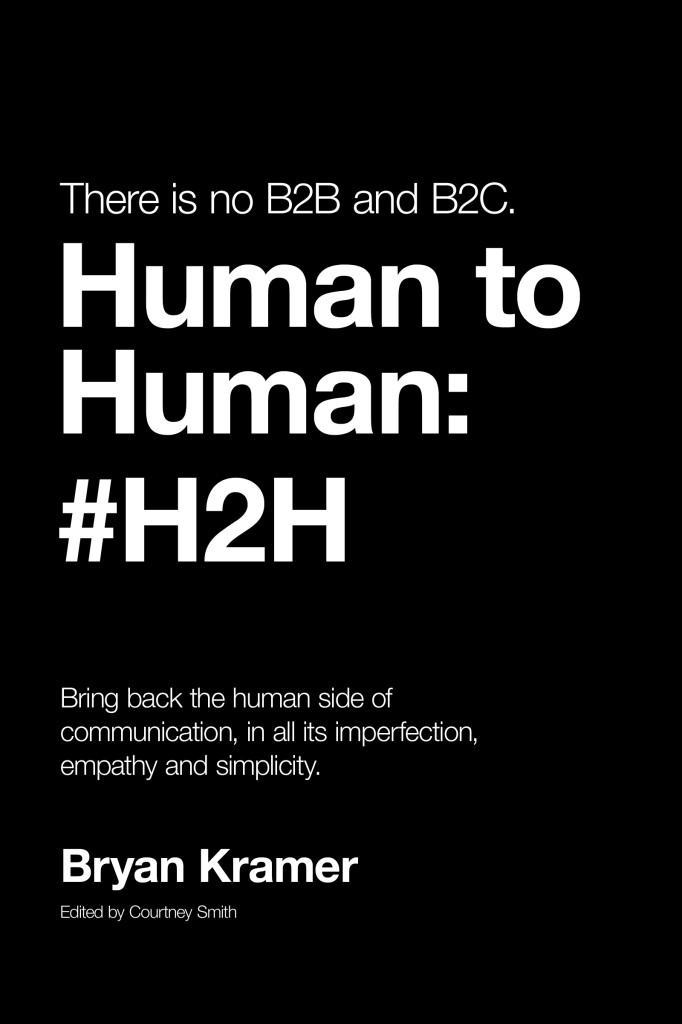You know what doesn’t work for a social media strategy? Not being social. It might sound like common sense, but all too often, being social is overlooked in a social media strategy. It’s not enough to just start accounts with all the most popular social media tools and community sites, even when you include professionally-designed graphics and a big bold display of your logo and a few text lines about your brilliant mission. First and foremost, you absolutely must BE SOCIAL!
social
When People ask me What’s the ROI of Social…
When people ask me what’s the ROI of Social, I ask them… what’s the ROI of Trust, and what’s the ROI of Loyalty. The answer, when used to build relationships the results will be… longer lifetime value of a customer, larger average order value, and increased frequency of purchase. All measurable and all lead to increased sales and profits.
Brands/Companies that use social successfully reap the rewards of customer satisfaction, deeper employee loyalty, more effective knowledge sharing, improved brand reputation, lowered costs, and most importantly… increased revenues.
Is There a One-Size-Fits-All “Giving” Ratio? ~via @InsideCXM
Any time a big digital idea comes along, especially an idea that shakes free from the status quo, the marketing masses have one simple question – how does it work? If that question can’t be answered with reams of data, the concept is often dismissed. It’s a pragmatic set-up that often works, but also risks missing the type of very important outlier that doesn’t lend itself to conventional metrics and analytics.
So, what’s this got to do with Return on Relationship (ROR, #RonR) and giving? Well, you may be wondering if there’s a perfect, one-size-fits-all giving ratio that’s sure to check off the requisite statistical boxes and deliver the desired results. It’s a natural thing to wonder in this industry, but it’s not as easy to measure as page-views, followers or shares.
Whereas an ad campaign can be broken down and measured in parts, giving is a more holistic endeavor. You can certainly measure the results of giving and gain insight into its positive effects on your bottom line, but there’s no magic number for the process. In fact, trying to determine exactly how much needs to be given ultimately undermines the intent of the process. Giving isn’t about instant gratification. It’s about long-term success.
Think about some of the mom-and-pop businesses in your hometown. Which ones are still there? What makes one convenience store, restaurant or small retail outlet survive and thrive, when similar business located in the same area fail? Prices, product quality and location all matter, but relationships are what truly separate the long-term success stories from the failures.
In the case of a small business, those relationships were, and often still are, built the old-fashioned way. That means talking to people face-to-face, getting to know them on a personal level, and remembering their name the next time they stop in to visit. It means addressing customer concerns in a prompt, respectful manner and guiding customers through purchases with a mutually beneficial end in mind. It’s about establishing relationships in a way that doesn’t lend itself to predetermined ratios.
Does that mean you need to operate a large corporation like it’s the general store on “The Waltons?” Of course not. Big data still has a prominent seat at the table, just not at the expense of recognizing that those data points represent living, breathing people.
Technology is often blamed for the impersonal nature of the modern business-consumer relationship. It shouldn’t be. The most powerful relationship-building tools in the world are hiding right in plain sight on our smartphones, tablets and laptops. The power of those tools is determined by how we use them.
Take social media, for example. One plan of attack is to get as many followers as possible, bombard them with carefully selected marketing content, ignore comment threads on posted content, rinse and repeat. To me, that looks a lot more like sending someone a catalog than it does building a meaningful relationship.
To get the most out of giving, we need to focus more on the “social” part and less on the “media” part. Have an active presence and use social media to genuinely interact on a personal basis. It’s an opportunity to build real relationships with customers based on timeless values, and in a far more efficient manner than simply waiting for those customers to wander into your brick-and-mortar establishment.
Is there a perfect ratio for giving? No, but that’s the point. So give, #JustBeNice, and don’t expect anything in return. After that, prepare to be amazed when what you get in return is far better than what you’d have expected in the first place.
Originally posted at InsideCXM JUNE 2, 2014 BY
Marketing Isn’t Dead ~via @InsideCXM
In recent times several marketing and communications gurus have declared “Marketing is dead.” Indeed, many of the traditional channels for marketing, such as advertising, direct mail and cold calling, have lost much of their effect and impact. However, as long as there are businesses offering meaningful products and services, there will always be a need for marketing that communicates their value. Traditional marketing methods might be floundering, but new marketing that centers on communication is gaining traction. Marketing isn’t dead….it’s just different. Here are the important changes you need to make to modernize your marketing in order to stay alive and thriving.
Seek to Be Found
Interruption marketing is a thing of the past. Consumers have become immune to the deluge of “buy now” messaging that crosses their path hundreds of times throughout their day. Before the internet, consumers followed a different path to purchasing. They saw an ad and often sought information and opinions from close and trusted sources like friends and family. Vendors or businesses may have also been researched through the yellow pages or another printed directory, and sales resources were contacted for information before a purchase was made. Except for the friends and family part, much of that has been thrown out the window. Now the majority of consumers do their research on the internet before making their purchase—beginning with social channels to ask friends, colleagues and peers for advice. Sales reps aren’t called until much later in the buying cycle—after most of the research is already done. Businesses must now strive to be found in searches and provide relevant information to socially-connected seekers in order to influence buying decisions.
No More Marketing to the Masses
The one-size-fits-all broadcast messaging now falls predominantly on deaf ears. With today’s digitally savvy consumers, businesses must now communicate on a personal level with messaging that is customized to the buyer. As soon as prospects enter your buying funnel, you should know who they are and where they are in the buying process. From that moment on, their email communications and website visits should be customized to reflect what you already know. Consumers expect socially integrated communications and cross-media campaigns that are tailored to their needs.
Look for Ways to Communicate Value Instead of Selling
Today’s consumers have a near insatiable need for information, and successful brands are filling that need by concentrating on educating and informing. Instead of selling, they highlight their expertise and the value of their products and services through multidimensional communications that feature videos, content-rich websites, social media streams, informational blogs, educational eBooks, and compelling infographics. The key is to keep your focus on your buyers’ needs. Do more listening on a variety of social channels. Make it easy for people to converse with you and share your content. Stop pushing for the close, and start delivering value at every touch point.
Converse to Convert
This is the most difficult transition facing marketers today. The digital/social transformation is forcing brands to transition from “Convince and Convert” to “Converse and Convert,” so today’s marketing and communications need to be a two-way street between businesses and prospects, from the top of the funnel all the way down. When you can make the mind-set switch from marketing as advertising to marketing as conversation, all kinds of doors open up for building and nurturing relationships that result in more conversions, loyalty and advocacy. Including the huge opportunity of employee advocacy. I like to say… Empower you Employees and they will Power your Brand.
Remember, there will always be a need for marketing that creates, delivers and communicates value to customers. Marketing isn’t dead. It’s just different, and what has changed is the method by which we communicate that value. So goodbye interruption, and hello conversation—it’s here to stay. Most importantly, being involved in those conversations is key to differentiating ourselves from the competition because it allows us to be ready to surprise and delight our customers no matter where they are in the buying process.
Originally posted at InsideCXM JUNE 30, 2014 BY
Make Your Social Connections Count Or They Won’t Be Worth Counting ~via @InsideCXM
Whether you’re an individual or part of a brand, when it comes to business, it’s the conversations we have that make the difference, not how many acquaintances we have or the size of our contact list. Let’s say you are an individual who likes to attend networking functions. Does a desk drawer full of business cards do you any good? Nope. You can collect business cards all day long, but unless after meeting you connect on social channels, pick up the phone and call someone, or reach out to connect with them in another way—those cards are just a dust gatherers, nothing more.
To Many Businesses, Social is Still a Campaign-Based Tactic
To many businesses, social is still a campaign-based tactic, viewed and managed separately from business operations. This is flawed thinking. Social media marketing needs to be woven into the fabric of all marketing and communications channels, and strategically managed from a 360-degree perspective. Why? Because social communication has worked its way into most aspects of your customers’ daily lives. There’s no way around it—people who frequent social channels want the companies they deal with to interact with them on those channels.
Learning to speak “Human” #H2H
In his new e-book There is No B2B or B2C: It’s Human to Human: #H2H my good friend Bryan Kramer gives some wise advice to brands: “I don’t care what language you speak, who your brand is or what message you’re trying to send, we all need to speak more human.” I love that statement because it so perfectly reminds us that in the midst of all of our increasingly complex digital sophistication, making the human connection is more important than anything else. Because of the power of social to inform and educate consumers, companies need to be a part of the social scape, and that’s means functioning in the world on a human to human scale. They can no longer afford to hide behind a logo. They have to converse with their market and above all, listen.
Dear [insert business name], what’s your promise?
 You say you want to get closer to customers, but your actions are different than your words.
You say you want to get closer to customers, but your actions are different than your words.
You say you want to “surprise and delight” customers, but your product development teams are too busy building against a roadmap without consideration of the 5th P of marketing…people.
Your employees are your number one asset, however the infrastructure of the organization has turned once optimistic and ambitious intrapreneurs into complacent cogs or worse, your greatest detractors.
You question the adoption of disruptive technology by your internal champions yet you’ve not tried to find the value for yourself.
Social needs introverts too
 My name is Molly, and I am an introvert.
My name is Molly, and I am an introvert.
There, I’ve said it. Few of my colleagues or acquaintances would believe it. My job as Social Business Director at 1000heads demands some of the most ‘extroverted’ activities you can imagine – speaking at international conferences, running training programmes for clients, internal evangelism – activities that demand constant sociability and public gregariousness. And I love it. I absolutely love it.
But those who know me well also know that I regularly retreat into ‘Molly zone’, craving time alone to think and work. I will book out meeting rooms to escape open plan intrusion. After a long day of interaction, I will more often than not run away to spend time with a book rather than join others for beers.
The 6 Pillars of Social Commerce: Understanding the Psychology of Engagement
 Social media is about social science not technology. As such, its value is not realized in the Likenomics of relationship status nor in the scores individuals earn by engaging in social networks. The value of social media comes down to people, relationships, and the meaningful actions between them. As such, its value is measured through the exchange of social currencies that contribute to one’s capital within each network. Through conversations, what we share, and the content we create, consume and curate, we individually invest in the commerce of information and the relationships that naturally unfold. It is in how these relationships take shape that is both in and out of your control. This is why, in the age of social networking, relevant engagement counts for everything.
Social media is about social science not technology. As such, its value is not realized in the Likenomics of relationship status nor in the scores individuals earn by engaging in social networks. The value of social media comes down to people, relationships, and the meaningful actions between them. As such, its value is measured through the exchange of social currencies that contribute to one’s capital within each network. Through conversations, what we share, and the content we create, consume and curate, we individually invest in the commerce of information and the relationships that naturally unfold. It is in how these relationships take shape that is both in and out of your control. This is why, in the age of social networking, relevant engagement counts for everything.






